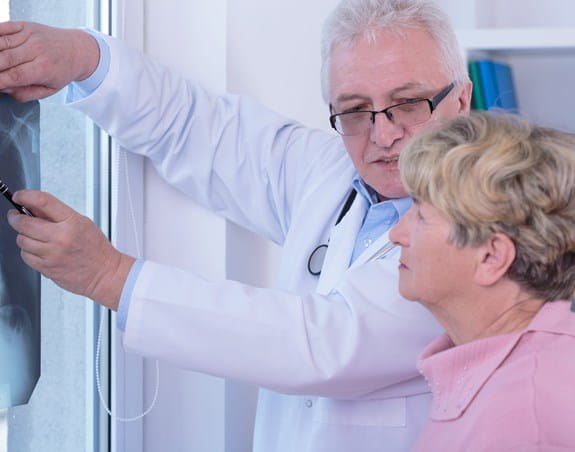Medical radiation
What is medical radiation – and how are we exposed to it?
Some medical imaging tests and some types of cancer treatment use ionizing radiation. There are usually 2 ways you can be exposed to medical radiation:

X-rays and CT scans (which are a series of x-ray images) use radiation to produce images of body organs to diagnose disease or injury.
During a PET scan, a low-dose radioactive sugar is injected into the body and picked up by a scanner that turns it into 3D images.
Radiation for cancer treatment uses higher doses of radiation to destroy cancer cells. It works by damaging the cancer cells over and over again. The main use of radiation therapy is to shrink a tumour, but it can also be used in other ways to treat cancer. Radiation therapy is an effective treatment, but a side effect linked to radiation therapy in the past has been that you may be at greater risk of developing a second cancer years later.
Radiation therapy today is very sophisticated. It targets the tumour much more precisely using the least amount of radiation needed. This means there is usually less damage to nearby healthy cells and reduces the frequency and severity of side effects.
Medical radiation and cancer
The chance of radiation causing genetic damage or increasing the risk of cancer is related to the total amount of radiation accumulated by a person. The greatest risk comes from:
- larger doses of radiation
- longer exposure to radiation (such as over a lifetime)
- high-strength forms of radiation
The risk that important tools like medical imaging tests or radiation therapy pose must be weighed against their benefits. Often the benefits, which can be life-saving, outweigh the risks.

Many important advances in technology have helped lessen the damage that radiation can do to healthy cells. This reduces side effects. Steps are also taken to protect people, as much as possible, from being exposed to unnecessary radiation during medical procedures.
If you’re concerned about medical radiation as a patient, talk to your doctor about why you should have x-rays or imaging tests and what the tests will tell you. Only have those that you agree are really necessary.
Your trusted source for accurate cancer information
With support from readers like you, we can continue to provide the highest quality cancer information for over 100 types of cancer.
We’re here to ensure easy access to accurate cancer information for you and the millions of people who visit this website every year. But we can’t do it alone.
Every donation helps fund reliable cancer information, compassionate support services and the most promising research. Please give today because every contribution counts. Thank you.
